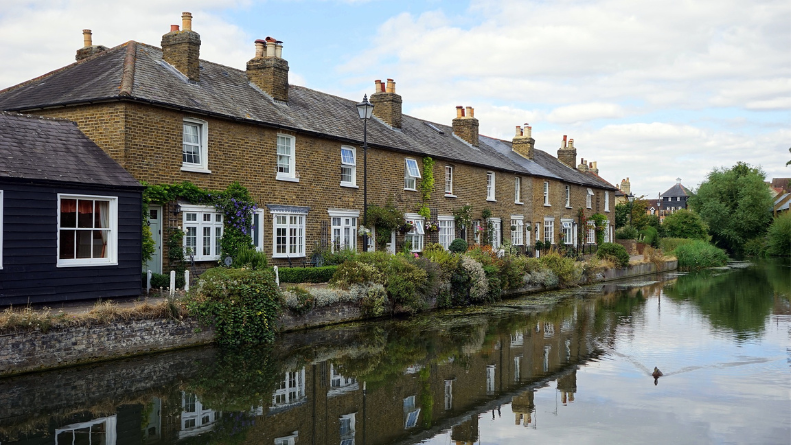Harmonising Nature and Urban Life: The Rise of Garden Cities
In an era where environmental concerns and sustainable living are of paramount importance, the concept of garden cities is rapidly gaining traction as an innovative solution for both housing and property investments. These eco-friendly, self-contained communities combine the best aspects of urban and rural living, creating vibrant and sustainable neighbourhoods that cater to modern sensibilities. In this comprehensive guide, we will explore the history, development, and benefits of garden cities and their potential impact on the UK property market.
The Garden Communities Programme: Growth Across England
The UK government has recognised the potential of garden cities and is actively investing in their development through the Garden Communities Programme. This ambitious initiative aims to deliver up to 16,000 homes per year from 2025, revitalising 43 towns and villages across England, from Cornwall to Carlisle. The programme is designed to promote economic growth and create sustainable, healthy living environments with a strong focus on green spaces and public amenities.
For property investors, the Garden Communities Programme presents an opportunity to capitalise on the growing demand for eco-friendly housing options, with the potential for significant returns as the market evolves to prioritise sustainability.
Boosting Property Value with Green Upgrades
A recent study by the World Wildlife Fund (WWF) and ScottishPower found that implementing green upgrades can increase property values by an average of £10,000 and reduce energy bills by up to £1,800 per year. This demonstrates the potential for property owners to enhance the value of their investments while simultaneously contributing to a greener future.
Types of Green Upgrades
Green upgrades can range from small-scale improvements to larger, more comprehensive renovations. Some examples include:
- Installing solar panels
- Upgrading insulation
- Fitting energy-efficient windows
- Installing low-flow water fixtures
- Incorporating green roofs or walls
- Using energy-efficient heating and cooling systems
The Impact on Property Value
As the UK continues to work towards its climate targets and the demand for sustainable living solutions grows, properties that incorporate green upgrades are likely to become increasingly attractive to buyers. This, in turn, can lead to higher property values and a greater return on investment for property owners.

The Origins of the Garden City Movement
The Garden City movement can be traced back to the late 19th and early 20th centuries, emerging as a response to the overcrowded and polluted living conditions in industrial cities. The movement aimed to create healthier, greener living environments that promoted well-being and social cohesion.
Ebenezer Howard’s Three Magnets
Englishman Ebenezer Howard is considered the founding father of the Garden City movement. He proposed the concept of garden cities as a solution to the problems faced by urban and rural communities, which he described as the “Three Magnets“: town, country, and town-country. Howard envisioned garden cities as self-contained, sustainable communities with distinct zones for industry, residences, and public spaces.
Early Garden City Developments
The first garden cities, Letchworth and Welwyn, were developed in the UK during the early 20th century. These pioneering developments showcased the core principles of the Garden City movement, including the importance of green spaces, sustainable infrastructure, and a strong sense of community.
Garden Cities in the United States
The Garden City movement gained traction in the United States, where several communities were developed based on Howard’s principles. These American garden cities helped to further popularise the concept and demonstrated its potential for global applicability.
Key Examples of American Garden Cities
Notable examples of garden cities in the US include:
- Residence Park in New Rochelle
- Woodbourne in Boston
- Virginia’s Hilton Village
- Pittsburgh’s Chatham Village
- Various areas of New York, particularly in Queens[5]
The Legacy of the Garden City Movement in the US
The garden city movement has had a lasting impact on urban planning and development in the United States. Many modern American suburbs and planned communities exhibit design principles inspired by garden cities, emphasising the importance of green spaces and sustainable living.
Advantages of the Garden City Movement
The garden city movement offers numerous advantages that make it an appealing prospect for both residents and property investors:
Sustainability
Garden cities prioritise eco-friendly practices and sustainable design, including energy-efficient housing, green spaces, and sustainable transportation options. This focus on sustainability caters to the growing number of environmentally conscious consumers and residents seeking greener living spaces.
Quality of Life
Garden cities provide residents with an improved quality of life by combining the advantages of urban and rural living. Access to green spaces, recreational facilities, and a strong sense of community contribute to the overall well-being of the residents.
Transportation
Garden cities are designed with efficient public transport systems in mind, reducing the reliance on private vehicles and contributing to a decrease in traffic congestion and air pollution.
Economic Opportunities
The creation of garden cities generates numerous economic opportunities, from construction and infrastructure development to the establishment of local businesses and services.
Investment Opportunities
The increasing demand for sustainable living spaces and the potential for increased property values make garden cities an attractive investment opportunity for property investors.
The Future of Garden Cities in the UK
As the UK continues to invest in the development of garden communities, the potential for growth in this sector is significant. With the rising demand for eco-friendly housing options, property investors can capitalise on this trend by investing in garden city developments or retrofitting existing properties with green upgrades.
In addition, the government’s commitment to the Garden Communities Programme indicates a strong focus on sustainable development in the coming years, positioning garden cities as a central component of the UK’s strategy for combating climate change and promoting sustainable living.
Conclusion: A Greener Future for All
The garden city movement represents a transformative shift in the way we approach urban planning and property investment, offering a pioneering solution to the challenges of sustainability and urbanisation. As the UK continues to invest in the development of garden communities, there are ample opportunities for investors to capitalise on the burgeoning demand for eco-friendly living spaces.
By embracing the principles of the garden city movement, we can work towards a greener, more sustainable future for all – one where our cities and towns not only provide a high quality of life for their residents but also contribute to the global effort to combat climate change and protect our planet for generations to come.
In summary, the garden city movement offers a compelling vision for the future of sustainable living and property investment. As the UK continues to develop garden communities, it is crucial for investors, developers, and homeowners alike to recognise the potential of this innovative approach to urban planning. By investing in garden cities and incorporating green upgrades into existing properties, we can create a greener, healthier, and more sustainable future for all.
ARE YOU READY TO START INVESTING?
Subscribe to our mailing list now for exclusive deals, investment guides and the latest information from the property market.






